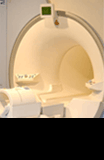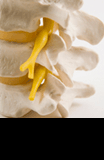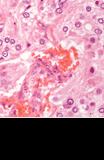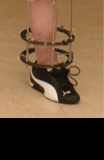Radiation in clinical research
Radiation is widely used in research for diagnosis, monitoring and treatment of disease.
However, exposure to ionising radiation increases the risk of cancer and must be closely monitored. The dose and risk for every research study must be assessed and study participants must be fully informed of this risk.
The Ionising Radiation (Medical Exposure) Regulations (IR(ME)R) 2017) legislation provides a framework intended to protect patients from the hazards associated with ionising radiation. You must have IRMER approval for all radiological assessments conducted within research protocols.
What is IRMER approval?
'IRMER approval' refers to the combination of both Medical Physics Expert (MPE) and Practitioner Clinical Radiation Expert (CRE) approval. Without IRMER approval, a study involving ionising radiation cannot legally be conducted.
For information about Medical Physics, please see Medical Physics and Clinical Engineering
MPE approval focuses on the risks from the radiation dose from all exposures in the study protocol (including those which are normal standard of care).
Practitioner approval focuses on whether the radiation exposure is justified for study participants, or whether there are other assessments which can be conducted with less exposure, without compromising the images.
When do I need IRMER approval?
IRMER approval is required for any exposure which involves ionising radiation (such as CT, XR, NM and PET scans and radiotherapy).
If assessments are non-ionising (such as MRI and US), you will still need to submit the study to Medical Physics and Radiology.
These studies will be reviewed for capability (Can we run the scans according to the study protocol? Do we have the correct program on the scanner to ensure your scan can run?) and do we have the capacity to conduct the scan (Will it take up more time? Are you recruiting participants from outside the Trust?).
Medical Physics and Radiology capture all studies to monitor activity and ensure feasibility.
The IRMER approval process consists of two parts, divided over two separate teams:
- Medical Physics Expert Approval
- Radiology Approval
Both approvals are managed through Oxford Research Radiation Assurance (ORRA) management system. Medical Physics will review the study first, then Radiology.
Medical Physics Expert review process
Medical Physics sends researchers an 'ORRA Q' Excel spreadsheet to (ORRA Q file) complete.
The researchers return the ORRA Q form, along with the other documentation:
- current protocol
- IRAS form
- patient information sheet
- imaging manual
- ARSAC approval (if required).
The process is different for studies where OUH is the lead site.
OUH as lead site
Medical Physics will devise the risk assessment for the IRAS form. Medical Physics will liaise with the study team to ensure that all procedures for the entire study (not just those that will be carried out at OUH) are captured in the ORRA Q file. The lead MPE will sign off the IRAS form electronically and provide statements about radiation dose and risk to be inserted into the PIS.
Radiology will provide the Clinical Radiation Expert (CRE) statement and sign this off within the IRAS system.
OUH as participating site
If OUH is not the lead site but one of many sites participating in the research study, Medical Physics will check that the scan types and number of scans in the protocol match with those in the lead site's Medical Physics Expert's assessment as detailed on the IRAS form and that these match the information in ORRA.
Medical Physics will ensure that the information held in ORRA is reflective of the procedures that will be conducted and that OUH can comply with the doses in the IRAF form.
The split of routine vs. additional scanning is agreed by the PI and the CRE/Practitioner. This is to ensure that this is reflected in the ORRA Q file.
Medical Physics ensure that the CRIS codes (codes used within Radiology to ensure the correct examination is conducted) held in the ORRA management system are appropriate. The MPE will check that the protocol is consistent with the IRAS form.
The Medical Physics (MP) review also consists of reviewing the Patient Information Sheet (PIS) and ensuring that it complies with the HRA guidance. This is to ensure that participants are provided with the correct information about the radiation risk to inform the consent process.
The process outlined above is referred to as MP Validation and once this is complete, Radiology is alerted to the study by the ORRA management system indicating that the application is now ready for Radiology validation.
Ideally the study is then costed using the reviewed and agreed ORRA Q file.
Radiology review process
The Research Radiology team receives an alert from ORRA indicating that a study is ready for Radiology Validation. This may be either a CRE/IRMER review (as lead site), IRMER review (if a participating site) or Capacity and Capacity review if the study contains non ionising radiation. Approval for each follows the same process.
Radiology will first ensure that we have all the relevant, up-to-date documents (current protocol, IRAS form and imaging manual), i.e. the application is validated by Radiology Administration and Research Radiographers.
Research Radiographers ensure that there are no inconsistencies or omissions in applications and documentation is consistent.
They will look closely at the scans that are proposed to ensure:
- scanners have the capability to conduct the scans required
- Radiology has the reporting expertise and capacity
- scans have been correctly allocated to either standard of care or 'additional' ('additional' being scan conducted when the participant is included in the study)
- training requirements for Radiology are practical, achievable and organised
- we know whether or not we will need to scan a phantom, have a specific programme to run the scan correctly or adjust the scanner in any way
- we will look at whether scans take more time than usual; this may have implications for work flow on the scanner and costings.
When conducting the Radiology Validation review, we engage with many stakeholders, over multiple sites. Once the study Validation is complete the MPE will review the study and following successful review, it will then be sent to the practitioner for their approval and once received sent back to the researcher.
The MPE review takes up to ten days to complete post Radiology Validation.
Amendments to studies which include changes to Radiological procedures or extension of the study will need re-review; please contact Radiology to discuss.
Top tips
Please contact Medical Physics and Radiology as early as you can.
- Medical Physics: EthicsRadiationEnquiries@ouh.nhs.uk
- Radiology: CHRadiologyRd@ouh.nhs.uk
Please leave enough time for our review: it's complex and involves discussing with multiple stakeholders. A week is not long enough!
Please try to ensure your documentation matches.
- Does the protocol state what the IRAS form states?
- Have you completed the ORRA Q form fully?
- Do you need specific reporting of a scan?
Either identify the Radiologist with the correct specialty to discuss, or email Radiology for further discussion.
Email: CHRadiologyRd@ouh.nhs.uk
Do you require a biopsy for your study? Please liaise with the appropriate Radiologist to ensure that they have the capacity to undertake biopsies for the study.
Is specific radiology training required? Please discuss with Radiology as soon as possible:
Does your study involve any scanning at the Manor Hospital? If so you must contact the Manor MPE service, which is currently provided by St Georges Hospital Trust, London. All research exposures which are to be conducted at the Manor Hospital must be subject to the Manor MPE review. OUH MPEs are not entitled to act as MPEs for the Manor Hospital.




























































